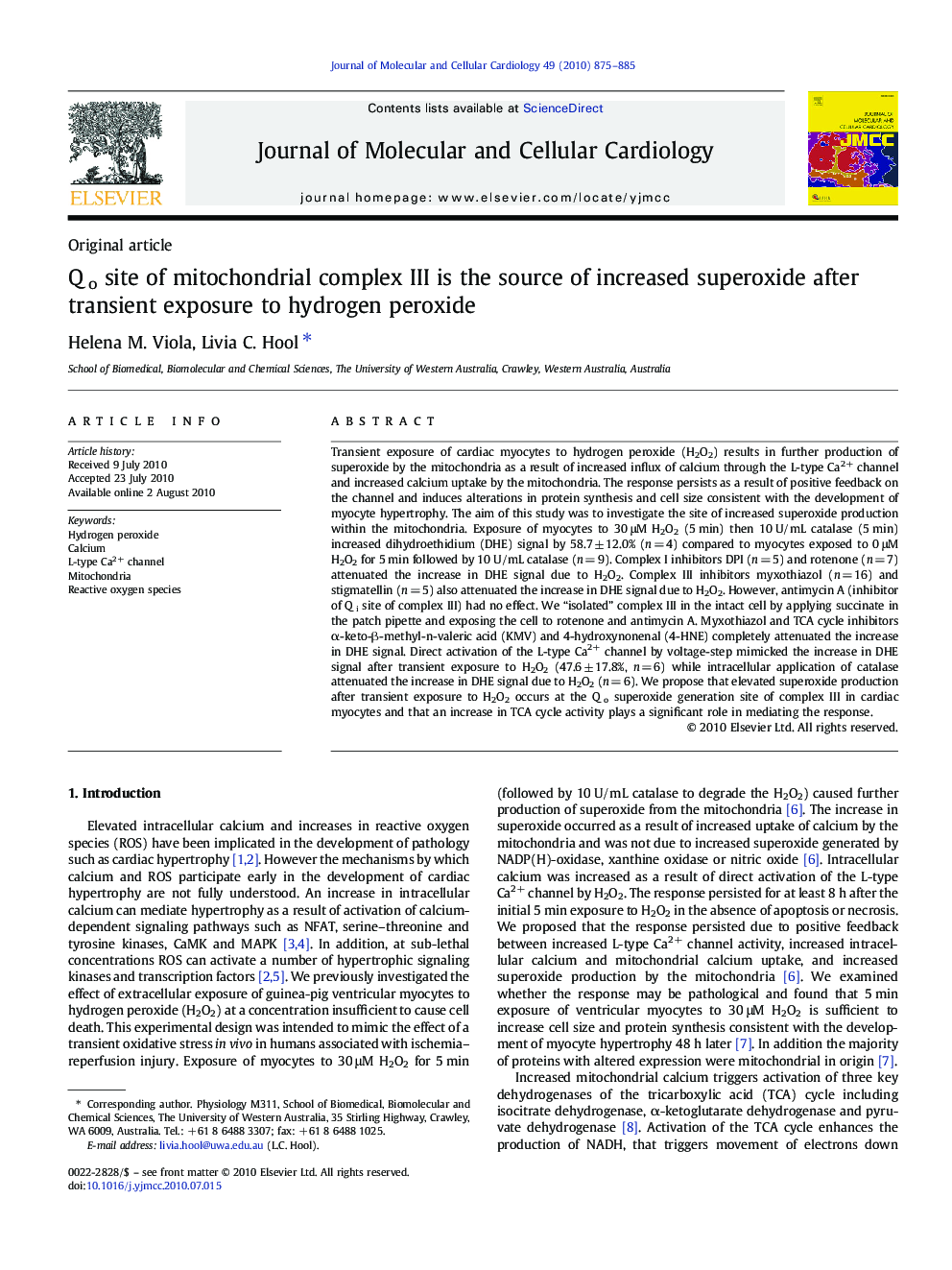| Article ID | Journal | Published Year | Pages | File Type |
|---|---|---|---|---|
| 10954000 | Journal of Molecular and Cellular Cardiology | 2010 | 11 Pages |
Abstract
Transient exposure of cardiac myocytes to hydrogen peroxide (H2O2) results in further production of superoxide by the mitochondria as a result of increased influx of calcium through the L-type Ca2+ channel and increased calcium uptake by the mitochondria. The response persists as a result of positive feedback on the channel and induces alterations in protein synthesis and cell size consistent with the development of myocyte hypertrophy. The aim of this study was to investigate the site of increased superoxide production within the mitochondria. Exposure of myocytes to 30 μM H2O2 (5 min) then 10 U/mL catalase (5 min) increased dihydroethidium (DHE) signal by 58.7 ± 12.0% (n = 4) compared to myocytes exposed to 0 μM H2O2 for 5 min followed by 10 U/mL catalase (n = 9). Complex I inhibitors DPI (n = 5) and rotenone (n = 7) attenuated the increase in DHE signal due to H2O2. Complex III inhibitors myxothiazol (n = 16) and stigmatellin (n = 5) also attenuated the increase in DHE signal due to H2O2. However, antimycin A (inhibitor of Qi site of complex III) had no effect. We “isolated” complex III in the intact cell by applying succinate in the patch pipette and exposing the cell to rotenone and antimycin A. Myxothiazol and TCA cycle inhibitors α-keto-β-methyl-n-valeric acid (KMV) and 4-hydroxynonenal (4-HNE) completely attenuated the increase in DHE signal. Direct activation of the L-type Ca2+ channel by voltage-step mimicked the increase in DHE signal after transient exposure to H2O2 (47.6 ± 17.8%, n = 6) while intracellular application of catalase attenuated the increase in DHE signal due to H2O2 (n = 6). We propose that elevated superoxide production after transient exposure to H2O2 occurs at the Qo superoxide generation site of complex III in cardiac myocytes and that an increase in TCA cycle activity plays a significant role in mediating the response.
Related Topics
Life Sciences
Biochemistry, Genetics and Molecular Biology
Cell Biology
Authors
Helena M. Viola, Livia C. Hool,
